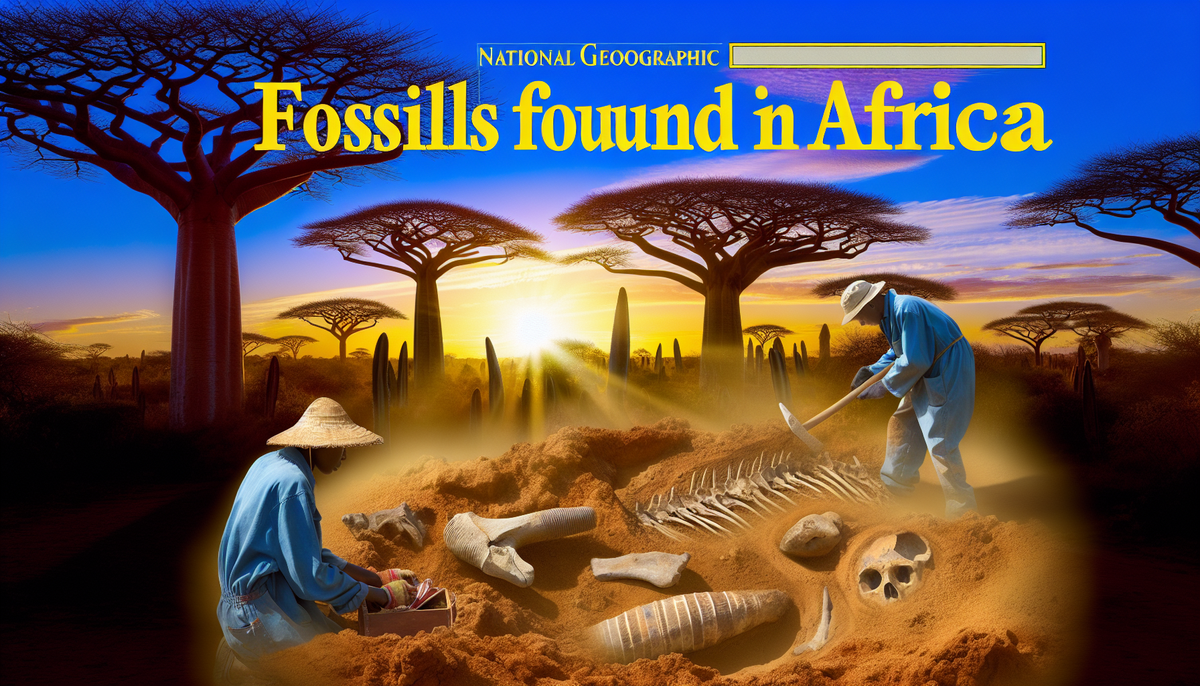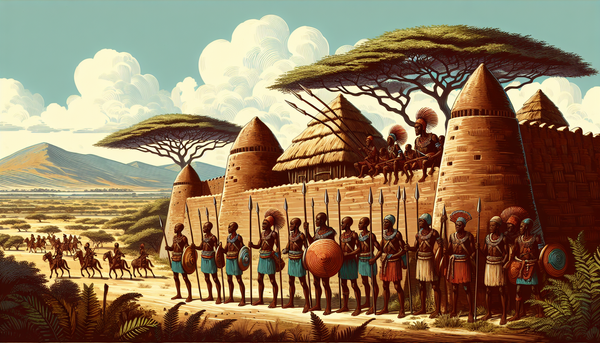Fossils found in Africa

Discovering Prehistoric Life through African Fossils
Africa, often called the cradle of humankind, is renowned for its rich fossil deposits that illuminate the early chapters of life on our planet. The continent's diverse landscapes—from arid deserts to lush savannas—have preserved a vast array of prehistoric remains, offering a window into ecosystems that existed millions of years ago.
One of the most significant fossil sites is the East African Rift Valley, where the remains of ancient hominins, like Australopithecus afarensis and Homo habilis, have been unearthed. These findings provide invaluable insight into the evolution of human beings and our ancestors. Additionally, discoveries of megafauna, including mammoths and giant ground sloths, reveal the environmental shifts that occurred over time.
Not only do these fossils help scientists understand evolutionary processes, but they also shed light on how these species interacted with their ecosystems. The study of Africa's prehistoric life assists researchers in comprehending the biological and climatic changes that have shaped both the continent and the globe over vast geological timescales. As exploration continues and technology advances, Africa's fossil record promises to offer even more secrets about the origins of life on Earth.
Evolutionary Insights from Paleontological Finds
Paleontology, the study of ancient life through fossils, has revolutionized our understanding of evolution and the complex processes that have shaped life on Earth. The incredible diversity of fossils discovered in various regions, particularly in Africa, provides a treasure trove of information about the lineage of species and their adaptations to changing environments.
For instance, the fossilized remains of early vertebrates found in Africa illustrate the transition from aquatic to terrestrial life, showcasing essential evolutionary adaptations such as the development of limbs. Similarly, the discovery of transitional fossils, such as Tiktaalik, bridges gaps between major evolutionary stages, revealing the gradual changes that led to the diversity we see today.
Furthermore, the fossil record reveals how climate shifts have influenced evolutionary pathways, forcing species to adapt, migrate, or face extinction. The extinction of dinosaurs and the subsequent rise of mammals exemplify how life on Earth is a dynamic process, continually reshaped by environmental pressures.
As scientists analyze these paleontological finds, they uncover patterns of evolution that not only illuminate the past but also help predict future responses of organisms to ongoing climate change. Ultimately, fossils serve as vital clues in unraveling the intricate story of life's evolution on our planet.
Significant Archaeological Excavations and Their Contributions
Archaeological excavations in Africa have yielded remarkable findings that have significantly advanced our understanding of human history and prehistory. One of the most notable sites is Olduvai Gorge in Tanzania, often referred to as the "cradle of mankind." This site has provided an extensive collection of early hominid fossils, tools, and evidence of early human behavior, shedding light on the evolutionary journey of Homo sapiens and our ancestors.
Similarly, the discoveries at the FLK Zinj site, also in East Africa, revealed the remains of Paranthropus boisei, a robust hominin species, alongside stone tools. This excavation highlights not only the biological diversity of early humans but also the technological advancements made by our ancestors.
In South Africa, the fossil-rich caves of Sterkfontein have yielded a plethora of fossils dating back millions of years, including the famous Mrs. Ples and Little Foot, which provide critical evidence of human evolution and the development of bipedalism.
These excavations contribute not only to our understanding of human ancestry but also to the broader context of ecological changes and social behaviors throughout history. Each discovery enriches the narrative of humanity’s past, offering vital insights into our origins and adaptations.
Impacts of Ancient Biodiversity on Modern Science
The study of ancient biodiversity through fossil records has profound implications for modern science, influencing various fields such as biology, ecology, and conservation. By examining the diverse life forms that existed millions of years ago, scientists gain insights into evolutionary processes that have shaped the genetic diversity we observe today.
Ancient ecosystems, as revealed through fossils, provide a context for understanding resilience and adaptation. For instance, the extinction events that wiped out numerous species taught us how environmental changes, such as climate shifts and habitat loss, impact life on Earth. This understanding is crucial for addressing contemporary challenges, such as biodiversity loss and the effects of climate change.
Moreover, research into ancient flora and fauna has led to advancements in medicine and biotechnology. For instance, studying ancient plant species may reveal unique compounds with potential therapeutic benefits. Additionally, insights gained from the evolution of past species inform conservation strategies, as understanding how species adapted or perished helps scientists develop effective methods for protecting endangered wildlife.
Ultimately, the investigation of ancient biodiversity not only enhances our understanding of life’s history but also equips modern science with the knowledge necessary to tackle pressing ecological challenges and foster sustainable practices for the future.
Unveiling Earth's Historical Climate through Fossil Records
Fossil records serve as a crucial tool for unraveling the complex history of Earth's climate. By examining the remains of ancient organisms, scientists can infer past environmental conditions, temperature fluctuations, and ecological shifts over millions of years. Each fossilized plant and animal carries with it evidence of the climate in which it lived, allowing researchers to reconstruct historical ecosystems.
For instance, the presence of certain plant fossils, such as tropical ferns, indicates a warm and humid climate, while the discovery of ice-age mammoth remains in Arctic regions reveals dramatically colder conditions. Additionally, sediment cores containing microfossils can reveal changes in ocean temperatures and ice cover, helping to paint a broader picture of Earth's climatic shifts.
Studying these records is particularly relevant in today's context, as it enhances our understanding of natural climate cycles and helps distinguish between natural variability and human-induced change. Insights gained from ancient climate patterns inform models predicting future climate scenarios, making fossil records essential for climate science.
Ultimately, fossils provide a historical lens through which we can view the intricate relationship between life and climate, offering vital lessons as we confront environmental challenges in the modern world.
The Role of African Fossils in Global Paleogeography
African fossils play a pivotal role in the study of global paleogeography, revealing insights into the movements of continents and the environmental changes that have shaped Earth's history. The fossil record in Africa provides crucial evidence supporting the theory of plate tectonics, showing how land masses have drifted and shifted over millions of years.
For example, the discovery of similar species in both Africa and South America, such as the ancient crocodile-like reptiles, illustrates the concept of continental drift. These connections indicate that both continents were once part of a larger landmass, allowing species to inhabit these regions before they became geographically isolated.
Additionally, Africa's fossil deposits illuminate the effects of ancient climate changes on landscapes and biodiversity. Fossils from various geological periods, such as the Sahara's ancient savannas and lakes, offer clues about the climatic conditions that prevailed at different times, contributing to our understanding of how ecosystems respond to global changes.
Through the study of African fossils, scientists can reconstruct ancient environments and chart the evolution of species in relation to shifting land and climate. This knowledge enhances our understanding of paleogeographical dynamics and lays the groundwork for predicting future ecological trends in a changing world.
Breakthroughs in Human Origins and Migration Studies
Recent advances in human origins and migration studies have significantly reshaped our understanding of how modern humans evolved and dispersed across the globe. Genetic research, particularly the analysis of ancient DNA, has yielded remarkable insights into the lineage of Homo sapiens, revealing complex interrelations with archaic human species, such as Neanderthals and Denisovans.
Key discoveries, including the fossilized remains from sites like Jebel Irhoud in Morocco, provide evidence that early modern humans appeared much earlier than previously thought, dating back approximately 300,000 years. These findings support the idea that human evolution was not a linear progression but rather a branching tree of species interacting and migrating across continents.
Moreover, advancements in archaeological techniques, such as isotopic analysis, have enhanced our ability to trace ancient human diets and movement patterns. For instance, studies of oxygen and strontium isotopes in skeletal remains have illuminated migration routes and settlement patterns, revealing how early humans adapted to diverse environments.
Understanding human migration patterns allows researchers to draw connections between ancient populations and contemporary societies, underscoring the importance of cultural exchange and adaptation in human history. These breakthroughs continue to not only enrich our narrative of human origins but also inform current discussions on migration and identity in a globalized world.



